I’m going to hit you with a quick, straightforward answer: South Africa has 9 provinces. This isn’t just a random number; it’s a reflection of the country’s commitment to administrative efficiency and cultural representation.
The nine provinces in South Africa are critical in maintaining both local governance and cultural identity, shaping the political, social, and economic landscapes.
Now, what you’re going to find out about in the next section is more than just a list of provinces and their capitals. You’re about to dive into the essence of each province, its locations, its sites to see, some cultures and flavors, and how they come together to form the vibrant nation of South Africa.
A quick dive into The Nine Provinces of South Africa
You’re going to find out about the unique tapestry that makes up South Africa’s nine provinces. Each province isn’t just about a different location on the map; it’s also about distinct cultures, landscapes, and histories that contribute to the nation’s rich mosaic.
First off, let’s list down the provinces of South Africa with their capitals, languages spoken, their area in sq kms, and their Afrikaans and Zulu names:
| Province | Capital | Languages Spoken | Afrikaans Name | Zulu Name | Area (sq km) |
|---|---|---|---|---|---|
| Eastern Cape | Bhisho | Xhosa, Afrikaans, English | Oos-Kaap | KwaZulu-Natali | 168,966 |
| Free State | Bloemfontein | Sesotho, Afrikaans, English | Vrystaat | Free State | 129,825 |
| Gauteng | Johannesburg | Zulu, English, Afrikaans, Sotho, Tswana | Gauteng | Gauteng | 18,178 |
| KwaZulu-Natal | Pietermaritzburg | Zulu, English, Afrikaans, Xhosa, Sotho | KwaZulu-Natal | KwaZulu-Natali | 94,361 |
| Limpopo | Polokwane | Sepedi, English, Xitsonga, Tswana | Limpopo | iLimpopo | 125,755 |
| Mpumalanga | Nelspruit | SiSwati, isiZulu, Afrikaans, English | Mpumalanga | Mpumalanga | 76,495 |
| Northern Cape | Kimberley | Afrikaans, Tswana, English, Xhosa | Noord-Kaap | iNingizimu Afrika | 372,889 |
| North West | Mahikeng | Setswana, isiXhosa, isiZulu, Afrikaans | Noordwes | Bokone Bophirima | 104,882 |
| Western Cape | Cape Town | Afrikaans, isiXhosa, English | Wes-Kaap | iNtshona Koloni | 129,462 |
Beware: the languages listed are not exhaustive, as there are multiple languages spoken in each province, and I’ve mentioned some of the prominent ones.
In my opinion, understanding each province is key to appreciating South Africa’s diversity. So, here’s a glimpse into what makes each one special:
1. Limpopo province.
It’s the northernmost province of South Africa, a land where the bushveld stretches endlessly and the mighty Limpopo River winds its way toward the Indian Ocean. It’s a place where the Baobab trees stand tall and proud, as ancient as the land itself.
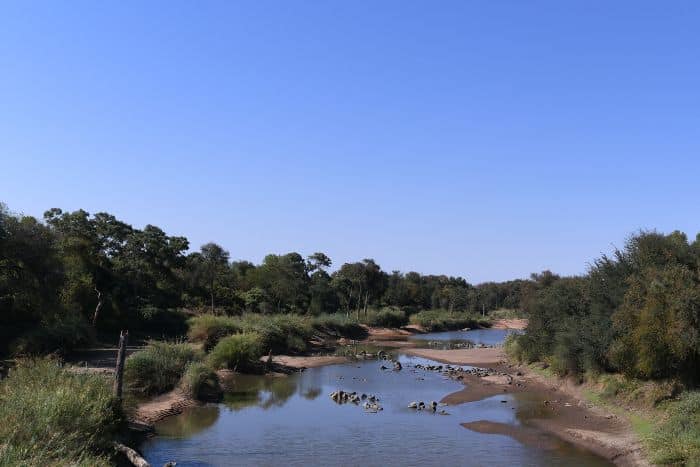
Limpopo, formerly known as the North Province, is a secluded region in the northern part of South Africa, often overlooked by tourists who typically pass through on their way to Zimbabwe or Kruger National Park.
Despite this, Limpopo has its own share of captivating attractions, with nature reserves offering a unique adventure for the intrepid traveler.
Exploration Across Limpopo:
You can start with a journey into the Soutpansberge in the north, where vibrant green-blue slopes and thick forests beckon.
To the west, Limpopo reveals remarkable wildlife parks, while the eastern expanse unfolds as a tapestry of agricultural lands cultivating tropical fruits, providing access to Kruger Park, and adorned with extensive forests.
Key cities include the capital Polokwane (formerly Pietersburg), and the picturesque Louis Trichardt (formerly Makhado).
The mining sector, notably in Phalaborwa, houses a colossal copper mine and serves as a pivotal gateway to Kruger Park.
Limpopo’s Waterways:
Covering 123,900 square kilometers, Limpopo shares borders with Zimbabwe, Botswana, and Mozambique, anchored by the Limpopo River.
This river, the second longest flowing eastward after the Zambezi, meanders through the landscape, presenting challenges like perilous rapids and cascades. Yet, it maintains navigability beyond its mouth, with access hindered solely by a sandbank during low tide.
Diverse Inhabitants:
Inhabited for 3.5 million years, Limpopo was initially charted by Portuguese explorer Vasco da Gama. Mokopane’s fossils trace back to these early dwellers.
In the northeast, the Venda people still observe traditions distinct from the broader South African populace. The eastern woodlands have been reigned by the helm of a lineage of women, holding sway over the Balobedu tribe Rain Queen, with her brother currently serving as regent. The mantle of Rain Queen is likely to pass to Modjadji VI’s daughter upon reaching 21.
Climate and Terrain:
Limpopo experiences a predominantly hot and arid climate, intensifying as one journeys north.
Summer temperatures hover between 17 and 27 degrees Celsius, while winter registers temperatures ranging from 4 to 20 degrees Celsius.
Traveling the N1, the primary thoroughfare, leads through the Waterberg Mountains, an area featuring swamps, streams, savannas, and the iconic baobab trees, which makes it a treasure trove of biodiversity and a UNESCO-designated reserve
It’s essential to note the prevalence of malaria in certain lower-lying regions within Limpopo, urging caution among visitors.
2. The Eastern Cape.
Eastern Cape offers both stunning coastlines and intriguing history as the birthplace of Nelson Mandela. filled with Xhosa culture and unspoiled coastlines.
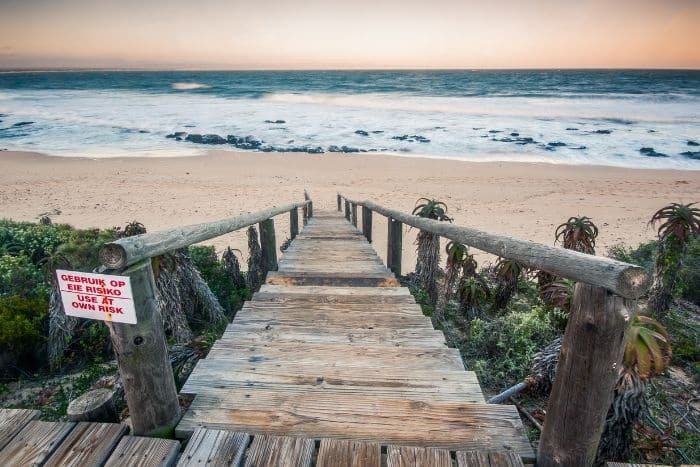
Embrace the Eastern Cape’s Coastal Splendor and Diverse Adventures
Stroll along the Eastern Cape’s captivating coastline, where a mesmerizing tapestry of landscapes unfolds.
Explore lush forests in the south, or catch the thrill of world-class surfing at Cape St Francis and Jeffrey’s Bay.
Bask in the Sunshine Coast’s pristine beaches, then venture north to the Wild Coast, where untamed waves, deep gorges, and hidden waterfalls await.
Discover Welcoming Cities and Natural Wonders
Immerse yourself in the friendly embrace of Port Elizabeth, nicknamed ‘the friendly city.’ East London, a gateway to the coastal surfing paradise, awaits with open arms.
Venture Inland for Untamed Expeditions
Embark on an adventure into the Eastern Cape’s diverse inland landscapes, from the verdant woodlands of Tsitsikamma National Park to the undulating terrain of Baviaanskloof Wilderness Area and the arid expanses of the Karoo.
Witness the majesty of the Big Five in Addo Elephant National Park and Mountain Zebra National Park.
Trace the Footprints of History and Culture
Delve into the Eastern Cape’s rich history, where the echoes of Boer-Xhosa conflicts and the struggle against apartheid resonate. Pay homage to people during apartheid, like Nelson Mandela, Steve Biko, and President Mbeki, who fought for a just and equitable society. Witness the resilience of Xhosa culture, a vibrant tapestry of traditions and heritage.
Embrace the Eastern Cape’s Climate
Along the coast, the Eastern Cape basks in a temperate climate, with mild winters and warm summers. Venturing inland reveals a stark contrast, with scorching summers and freezing winters in the Karoo. Mountainous regions experience ample rainfall, even welcoming snowfall during winter.
3. Free State
Discover the Free State
The Free State province sprawls with expansive plains, offering a distinctive allure and a variety of landscapes. Renowned for its undulating hills and sprawling fields, this region provides a serene retreat for those seeking a unique South African experience.
Natural Marvels Nature enthusiasts will find sanctuary in the Free State’s natural marvels. The Golden Gate Highlands National Park, with its golden cliffs and distinctive rock formations, is a haven for hikers and photographers alike. The province’s agricultural essence is showcased in expansive fields of sunflowers and wheat.
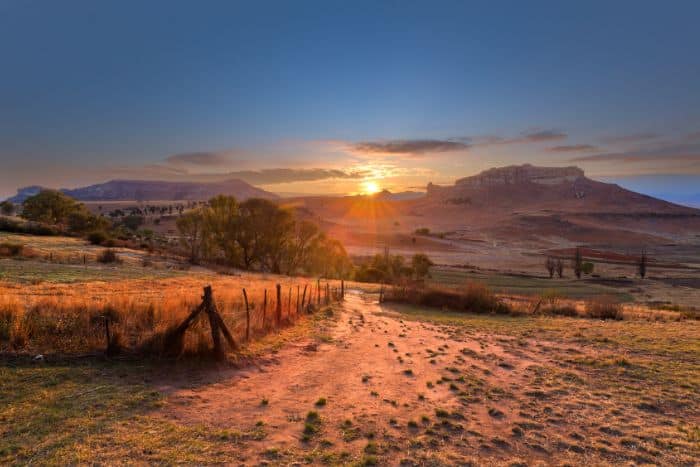
A little bit of history and the intriguing cities of Free State
Exploring the Free State reveals the historic city of Bloemfontein, affectionately known as the ‘City of Roses’ for its vibrant gardens.
Quaint towns such as Clarens contribute an artistic touch, nestled against the backdrop of breathtaking mountains.
History and Legacy The Free State boasts a storied historical fabric, with sites like the Basotho Cultural Village offering a glimpse into indigenous culture. Playing a pivotal role in the early days of the Boer War, the province’s historic battlefields, such as those in Vrede, evoke a poignant sense of history.
Towns like Parys, with its antique shops and artistic ambiance, radiate a distinctive charm. The province celebrates diversity through festivals like the National Arts Festival in Ficksburg, showcasing local talent.
Free State Climate
The Free State experiences a temperate climate, marked by chilly winters and warm summers. During winter, the landscape transforms, with the Maluti Mountains often adorned with a dusting of snow, creating a picturesque winter wonderland.
4. Gauteng
Gauteng may be the smallest province of South Africa, but it is one defined by vibrant urban life and a rich cultural mosaic and it serves as the pulsating economic and cultural heart of South Africa.
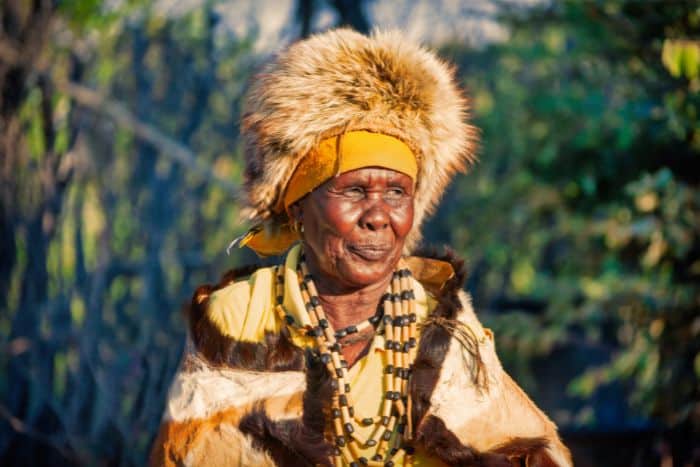
Cityscape Marvels
Johannesburg, renowned as the ‘City of Gold,’ exudes vitality with a diverse array of attractions. From the vibrant neighborhoods of Soweto to upscale shopping districts, the city caters to various tastes.
Pretoria, the administrative capital, boasts historical landmarks like the Union Buildings and the serene beauty of the National Zoological Gardens.
Cultural Kaleidoscope
Gauteng’s cultural vibrancy is reflected in its myriad museums, galleries, and theaters. The Apartheid Museum offers a poignant exploration of South Africa’s history, while Johannesburg’s Maboneng Precinct showcases contemporary arts and urban creativity. In Pretoria, Freedom Park stands as a tribute to the nation’s struggle for liberation.
Green Retreats
Despite its urban intensity, Gauteng provides green havens like the Walter Sisulu National Botanical Garden and the Pretoria Botanical Gardens. These oases offer a welcome respite, allowing visitors to reconnect with nature amidst the bustling urban milieu.
Economic center.
As South Africa’s economic powerhouse, Gauteng drives innovation and commerce. The modern skyline mirrors its economic prominence, and lively markets like the Rosebank Art and Craft Market capture the entrepreneurial spirit.
Climate Chronicles
Gauteng enjoys a moderate climate, featuring hot summers with temperatures averaging around 25-30 degrees Celsius (77-86°F) and cooler winters ranging from 5-15 degrees Celsius (41-59°F).
5. Kwazulu-Natal
KwaZulu-Natal merges the warmth of Indian Ocean beaches with the legacy of Zulu warriors.
Explore KwaZulu-Natal
From the sun-drenched beaches along the Indian Ocean to the majestic peaks of the Drakensberg Mountains, KwaZulu-Natal promises a diverse and captivating experience.
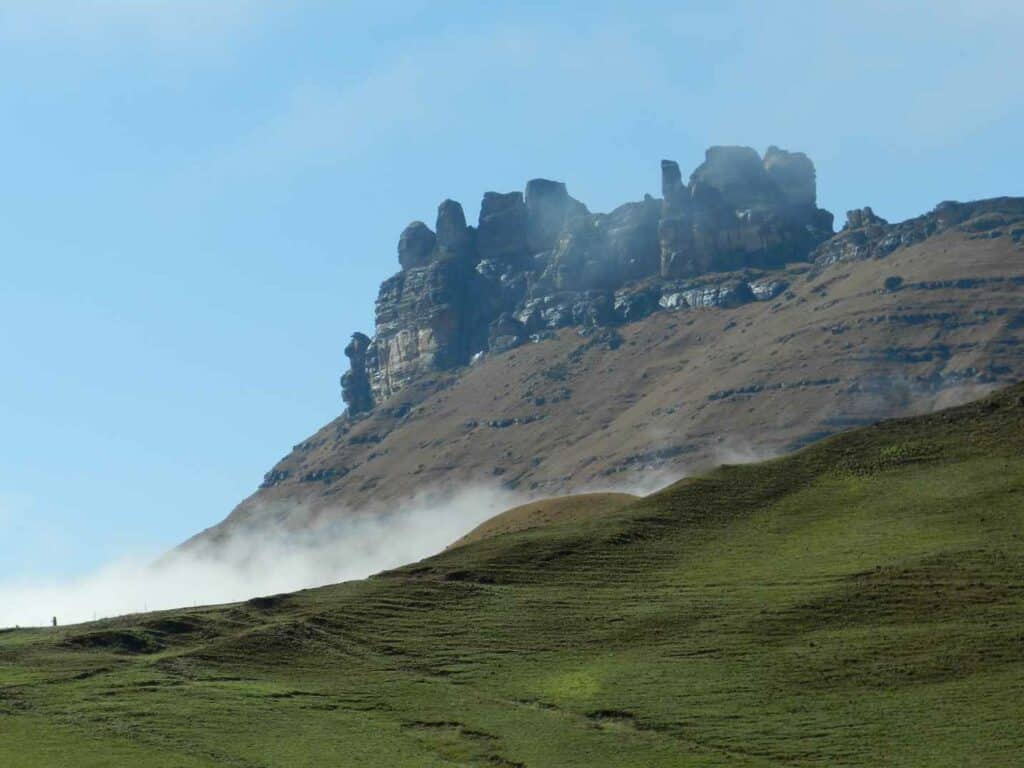
The province boasts a breathtaking coastline adorned with warm waters and golden beaches.
Durban, KwaZulu-Natal’s largest city, serves as a cultural melting pot and is home to iconic landmarks like the uShaka Marine World. Venture along the North Coast to explore the historic town of St. Lucia and its mesmerizing estuarine wonders.
Inland, the Drakensberg Mountains create a stunning panorama. Recognized as a World Heritage Site, this region beckons hikers with scenic trails and opportunities to delve into rich biodiversity. The uKhahlamba-Drakensberg Park showcases ancient rock art and captivating landscapes.
Cultural Tapestry
KwaZulu-Natal is steeped in Zulu traditions, offering visitors a chance to immerse themselves in vibrant culture through traditional dance, music, and ceremonies. The province also hosts historical sites like the Battlefields, where pivotal conflicts shaped South African history.
Nature’s Abundance
Explore the diverse ecosystems of KwaZulu-Natal, from the verdant Midlands with rolling hills and farmlands to the iSimangaliso Wetland Park, a UNESCO World Heritage Site teeming with wildlife. The province serves as a paradise for birdwatchers, nature enthusiasts, and those seeking an authentic African safari experience.

Climate Chronicles
KwaZulu-Natal enjoys a subtropical climate, featuring hot and humid summers with temperatures ranging from 20-35 degrees Celsius (68-95°F) and mild winters averaging 10-25 degrees Celsius (50-77°F). With a pleasant climate year-round, the province becomes an ideal destination for a variety of outdoor activities.
6. Mpumalanga
Mpumalanga, ‘the place where the sun rises’, is a province nestled in the eastern part of South Africa, celebrated for its awe-inspiring landscapes, abundant wildlife, and cultural legacy.
Mpumalanga boasts some of South Africa’s most captivating scenery. The Blyde River Canyon, among the world’s largest canyons, reveals panoramic views and geological marvels. Must-visit attractions include the majestic cliffs of God’s Window and the distinctive rock formations of Bourke’s Luck Potholes.
Wildlife Oasis
Embark on a safari adventure in the renowned Kruger National Park, a sanctuary for wildlife enthusiasts. Home to the iconic Big Five and a diverse array of species, the park offers unparalleled safari experiences. The nearby Sabi Sand Game Reserve provides a more exclusive and intimate wildlife encounter.
Cultural Legacy
Mpumalanga is rich in history and culture, with sites like the ancient rock art in the Drakensberg Mountains narrating the stories of early inhabitants. Visit the town of Pilgrim’s Rest, a living museum, to step back in time and immerse yourself in the gold rush era.
Nature’s Abundance
Explore the lush Lowveld region with its fertile landscapes and subtropical climate. Cascading waterfalls, including Mac-Mac Falls and Lisbon Falls, enhance the natural beauty. The charming town of Graskop serves as a gateway to the Panorama Route.
Climate Chronicles
Mpumalanga experiences a diverse climate, ranging from temperate highland areas to subtropical Lowveld regions. Summers are warm, with temperatures ranging from 20-30 degrees Celsius (68-86°F), while winters are mild, averaging 5-20 degrees Celsius (41-68°F). The region’s climate makes it an ideal year-round destination.
7. The Northern Cape
The Northern Cape is a territory of extremes, from the expansive landscapes to its vast deserts, distinctive rock formations, and celestial wonders, to the breathtaking Augrabies Falls and the ancient quiver tree forests, the Northern Cape promises a unique and awe-inspiring adventure.
Desert Grandeur
The Northern Cape is adorned with the captivating landscapes of the Kalahari Desert, where endless dunes and arid plains stretch into the distance. The Augrabies Falls, a spectacular cascade on the Orange River, adds a touch of natural splendor to the arid surroundings.

Distinctive Rock Formations
Explore the Richtersveld, a mountainous desert showcasing distinctive rock formations. This otherworldly landscape, also recognized as a UNESCO World Heritage Site, provides unparalleled opportunities for exploration. Quiver tree forests, ancient remnants of a bygone era, stand as silent witnesses to the passage of time.
Celestial Marvels
The Northern Cape offers some of the world’s best stargazing opportunities, with the town of Sutherland hosting the Southern African Large Telescope (SALT). Experience the enchantment of the night sky and delve into the universe from one of the finest astronomical vantage points.
Cultural Tapestry
Uncover the cultural richness of the Northern Cape through the traditions of the Nama people. Visit historic towns like Kimberley, renowned for the Big Hole and the Kimberley Mine Museum, providing insights into the province’s diamond mining history.
Climate Chronicles
The Northern Cape experiences diverse climates, from the arid expanses of the Kalahari to milder temperatures along the coast.
Summers can be warm, with temperatures ranging from 25-40 degrees Celsius (77-104°F), while winters are cooler, averaging 5-20 degrees Celsius (41-68°F). The region’s clear skies and expansive horizons contribute to its distinctive climate.
8. North West Province
North West offers a blend of wildlife and luxury at the Sun City Resort and Pilanesberg National Park.
This province is a region in South Africa celebrated for its varied terrain, wildlife reserves, and cultural gems.
Nature’s Charm
The North West Province showcases diverse landscapes, ranging from expansive savannahs to verdant valleys. Delve into the Pilanesberg National Park, a volcanic crater transformed into a wildlife sanctuary where the Big Five freely roam. The park’s unique topography adds a touch of enchantment to the safari experience.
Wildlife Oasis
Explore the Madikwe Game Reserve, a malaria-free safari destination recognized for its conservation initiatives and diverse ecosystems. Encounter a plethora of wildlife, including rare and endangered species, amidst sweeping plains and acacia woodlands.
Cultural Legacy
Uncover the cultural heritage of the North West Province in Mahikeng, a town steeped in history. Visit the Mahikeng Museum and the Mafikeng Siege Museum to gain insights into the region’s past. The province is also home to the Bakgatla-Ba-Kgafela Cultural Village, offering a glimpse into traditional Tswana life.
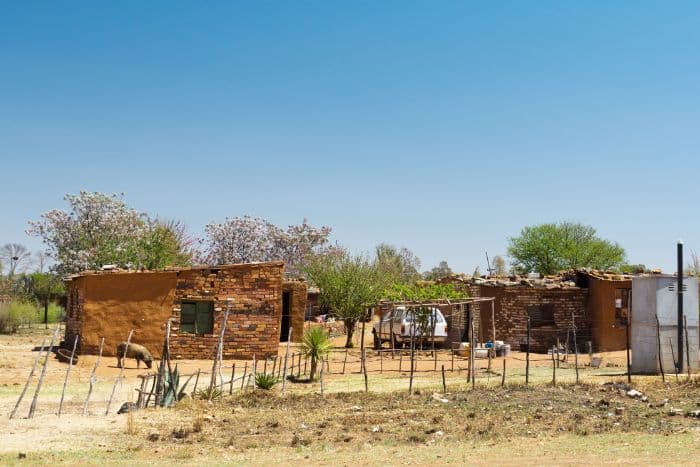
Adventure Beckons
For those seeking thrills, Sun City awaits with its world-class entertainment and resort amenities. Indulge in a range of activities, from championship golf courses to water adventures at the Valley of Waves. Sun City caters to a diverse array of interests.
Climate Chronicles
The North West Province experiences a temperate climate, with hot summers ranging from 25-35 degrees Celsius (77-95°F) and mild winters averaging 5-20 degrees Celsius (41-68°F). The region’s agreeable weather makes it a year-round destination for nature enthusiasts and adventure enthusiasts.
9. The Western Cape
Last but not least, the Western Cape is famed for its winelands, the iconic Table Mountain, and the vibrant city of Cape Town, with its cosmopolitan mix, is well known globally.
Embark on a mesmerizing journey through the Western Cape, a province in South Africa celebrated for its breathtaking landscapes, diverse wildlife, and cultural tapestry.
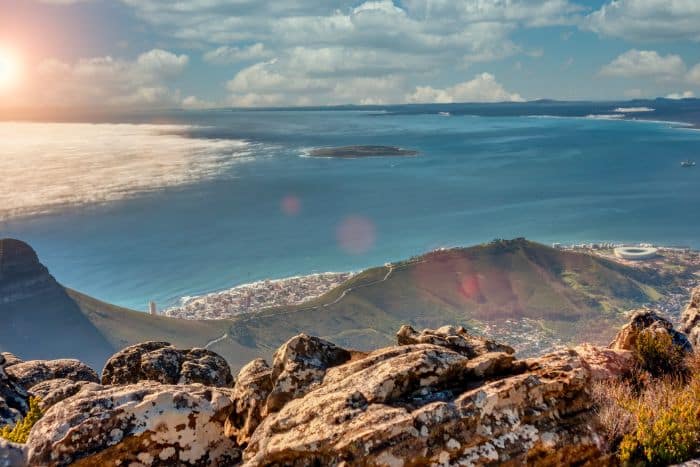
Nature’s Marvels
Western Cape boasts natural marvels, with Table Mountain standing as an iconic landmark. Take a cable car to the summit for panoramic views of Cape Town and the surrounding coastline. Explore the Cape of Good Hope, where the Atlantic and Indian Oceans converge.
Winelands Charm
Savor the delights of the Winelands, where rolling vineyards and historic estates produce world-class wines. Stellenbosch and Franschhoek, with their quaint villages and gourmet dining, create a culinary and oenophile haven.
Coastal Splendor
The Western Cape features a diverse coastline with pristine beaches and charming coastal towns. Experience whale watching in the scenic town of Hermanus or soak in the vibrant ambiance of Knysna along the Garden Route. The Cape Agulhas Lighthouse marks the southernmost tip of Africa.
Cultural Tapestry
Immerse yourself in the cultural richness of Cape Town, a city with a fusion of influences. From the historic Bo-Kaap neighborhood to the vibrant arts scene at the V&A Waterfront, the city offers a mosaic of experiences. Robben Island, a UNESCO World Heritage Site, provides profound insights into South Africa’s history.
Climate Chronicles
The Western Cape enjoys a Mediterranean climate, with warm, dry summers averaging 20-30 degrees Celsius (68-86°F) and mild, wet winters ranging from 7-18 degrees Celsius (45-64°F). The province’s favorable climate makes it a year-round destination for a diverse range of outdoor activities.
Each province not only shines with its charm but also plays a strategic role in the country’s economic, social, and political spheres.
Answering Common Questions About South Africa’s Provinces
In this section, I always go over a few faqs on the topic, so let’s go!
What were the provinces of South Africa before 1994?
Before 1994, South Africa had a different administrative division, which was based on racial segregation under the apartheid system. The country was divided into four provinces for the white population, also known as the “Republic of South Africa,” and ten Bantustans, or homelands, for the black population. The four provinces for the white population were:
- Cape Province: This included the western and southern parts of the country.
- Natal Province: Covering the eastern part of the country, including the coastal region.
- Orange Free State: Located in the central part of the country.
- Transvaal Province: Encompassing the northern and northeastern regions.
The Bantustans were semi-independent territories established by the apartheid government as part of their discriminatory policies. The Bantustans were:
- Bophuthatswana
- Ciskei
- Gazankulu
- KaNgwane
- KwaNdebele
- KwaZulu
- Lebowa
- QwaQwa
- Transkei
- Venda
It’s important to note that the administrative divisions of South Africa changed significantly after the end of apartheid in 1994. The post-apartheid South Africa consists of nine provinces that aim to promote equality and non-discrimination.
What is the oldest province in South Africa?
The Western Cape is considered the oldest province in South Africa. This is because the province encompasses the area where European colonization first took place in the country. The city of Cape Town, located in the Western Cape, was established by the Dutch East India Company in 1652 when they set up a refreshment station for ships traveling to the East Indies.
Conclusion: The Provinces as Pillars of South Africa’s Unity in Diversity
In my opinion, it’s the synthesis of these diverse provinces that fortifies South Africa’s motto, ‘Unity in Diversity.’ Recognizing the unique features and challenges of each province is vital in appreciating South Africa’s complexity.
If you have any more questions about this topic, please feel free to leave them down below in the comment section or join me on my social media channels for more pictures, stories and even videos of my travels to Africa!
I wish you happy travels!
Kind regards,
Lizzy
I now have a YouTube channel as well!
YouTube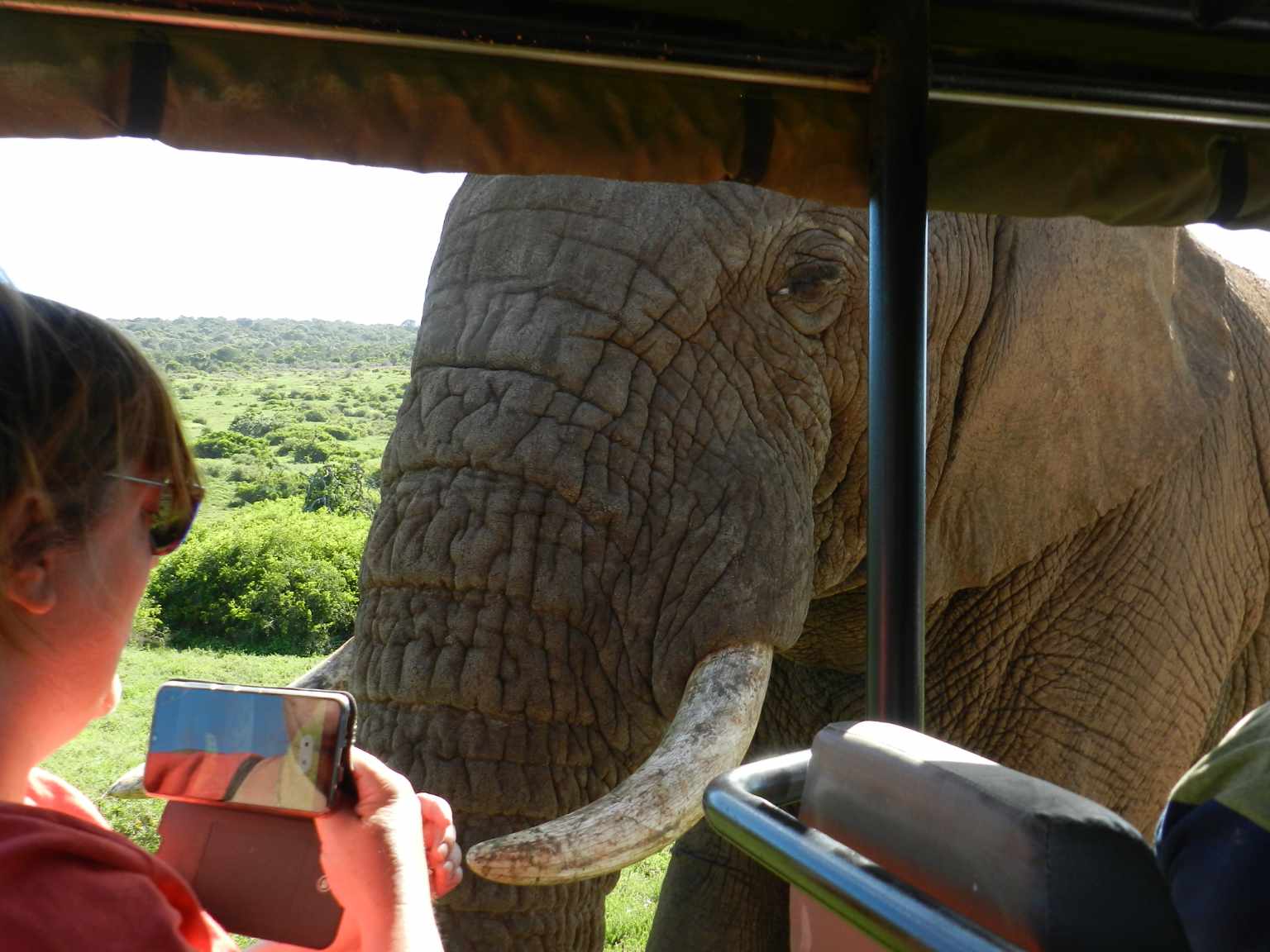
Hello Africa travellers!
Who am I? Well, the least you can say is that I am quite crazy about Africa, its nature, its climate, its culture, and more.
As a young woman in my twenties, I had already traveled to several African countries by traveling along in an overlander on my own and mostly camping ( or glamping ) and just fell in love with the diversity of it all.
So much, so that at the age of 26, I went back to university to study biology, which, unfortunately, I couldn’t finish because of health reasons (yes, I got sick from a tropical disease, oh cynicism). But this did not stop my dream of traveling back to Africa several times, and I still do.
My dream was back then to leave Europe and go study animal behavior, especially the elephants (sure, that’s every girl’s dream haha), but I am also very much intrigued by hyenas and other “ugly African animals“.
So, I “kind of” have a little bit of a scientific approach to my articles, when I write about African birds, for example. And most of all: the passion.
But life goes on, you move from one side of the country to the other, you get sick again and top it off with lower back problems, and before you know it, you are over 50 hahaha!
Now, I still travel to Africa, but take it a bit “easier” than the good old camping days, and stay in comfortable, yet affordable accommodations, together with my husband Wouter.
These are some of the countries I have traveled to: Kenya, Tanzania, Zanzibar, Malawi, Zambia, Zimbabwe, South Africa, Namibia, Botswana, Tunisia, and a little bit of Lesotho LOL .
While clearly not being African territory, but Spanish, I also visited Gran Canaria and Tenerife, and location-wise, I consider them “African”, because of their climate and nature, sue me :-p
The last trip I took was to South Africa in the year 2023, and it sure got the fevers for Africa back! From the Barberton mountains to the Drakensberg and the Southcoast, one month wasn’t enough at all to see the whole country, so we’ll be back! At ease and with a little bit more luxury than in my younger days haha!
I wish you happy travels!
Kind regards
Lizzy

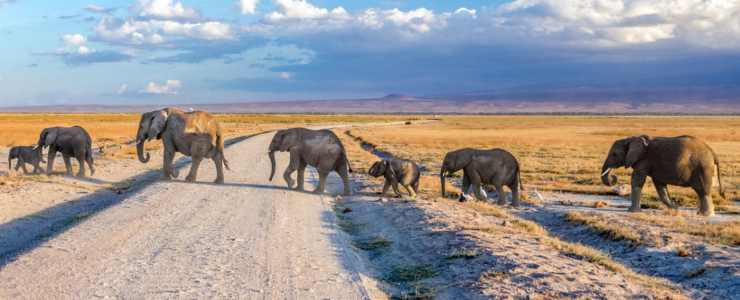
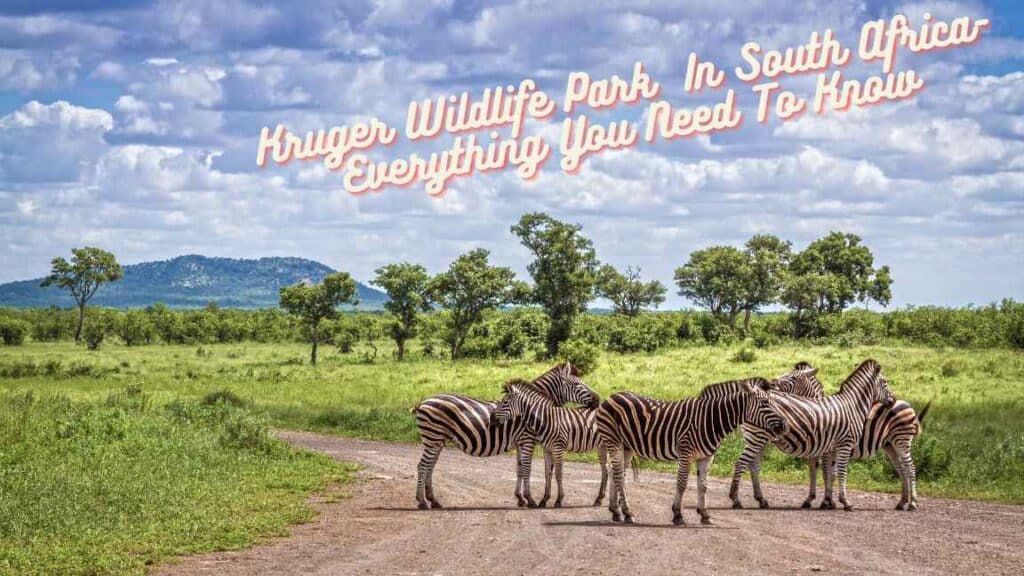

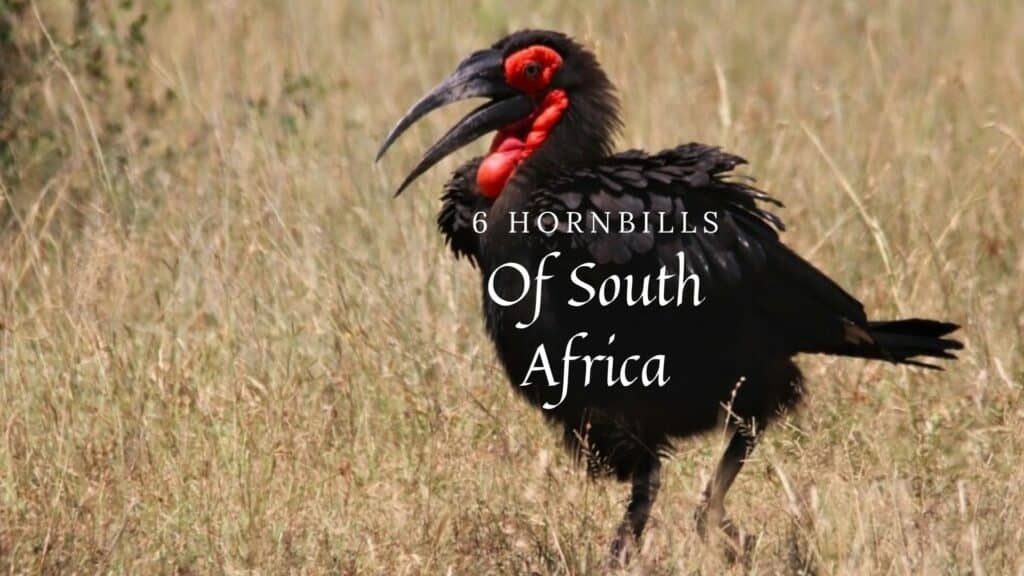
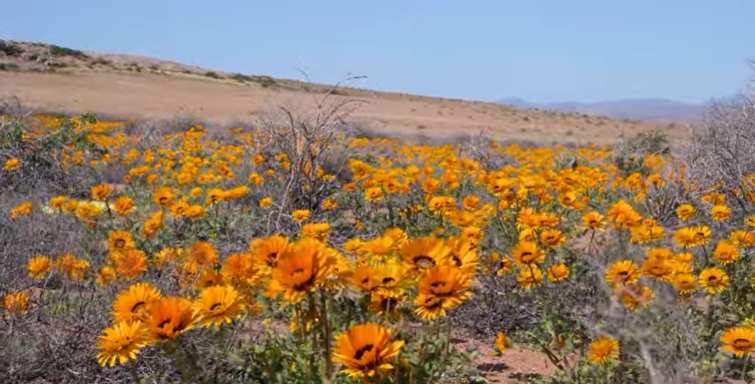
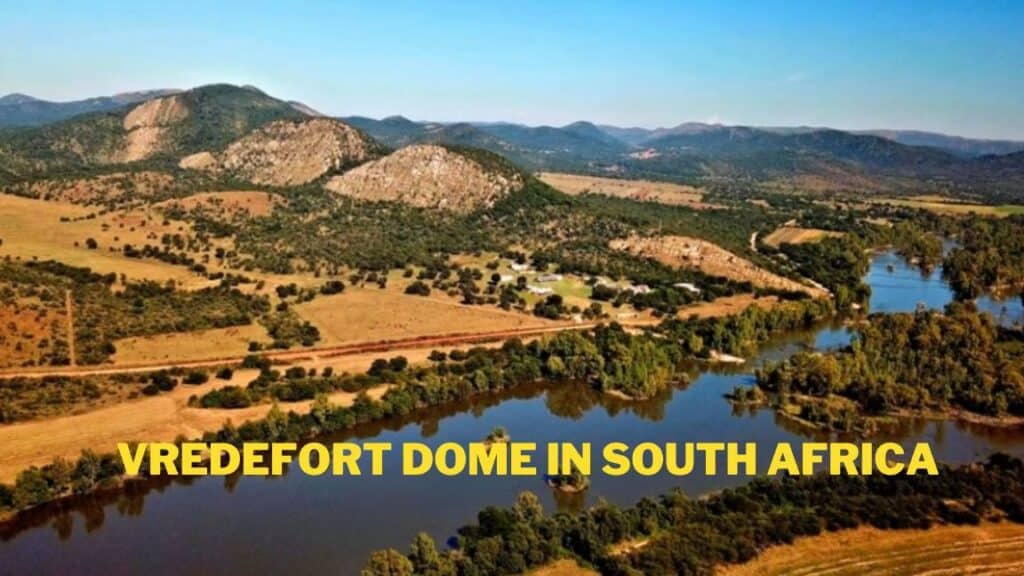

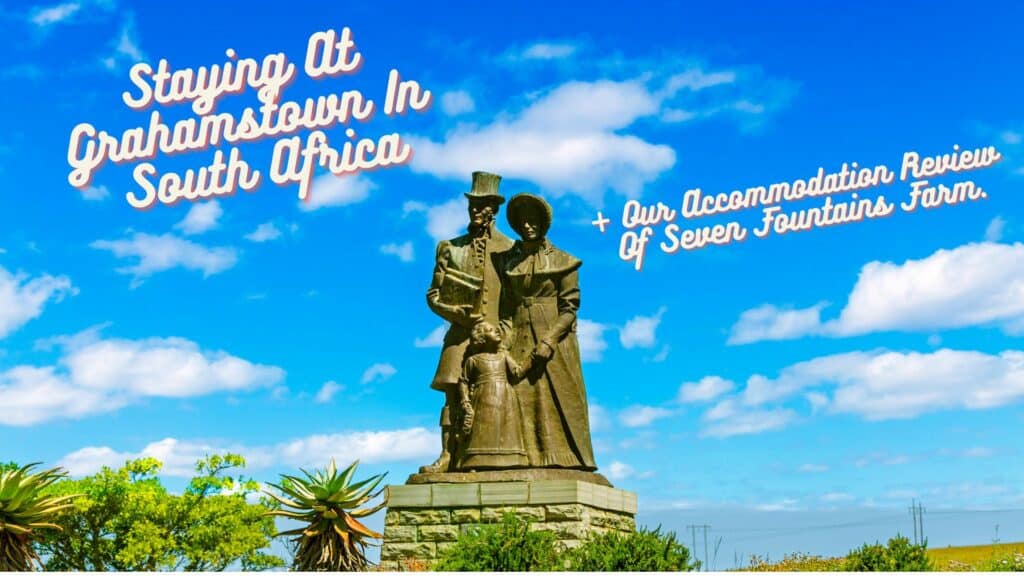
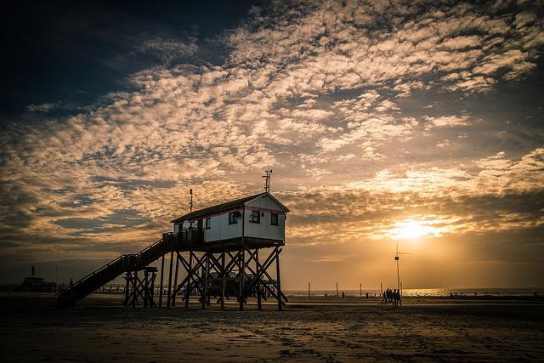
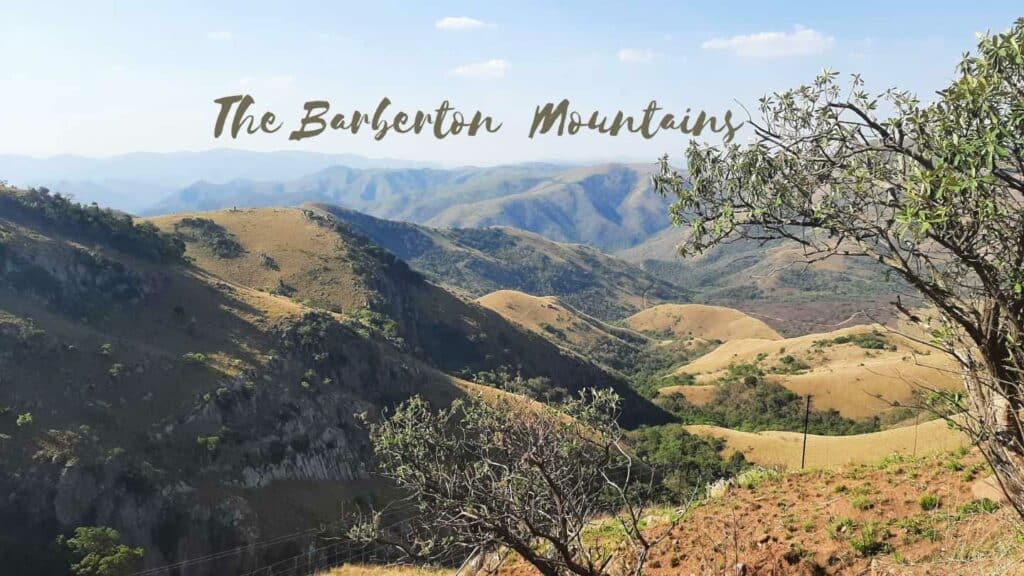
You really have captured my mind with this post. Previously South Africa was a place I had seen and heard about parts of through the sporting events there, Cricket, Rugby, Soccer WC, etc. But how you have broken down the individual provinces and what makes each one unique, how you have written it is very interesting!!
It has put a lot more context, for me to where the different cities are and the culture around South Africa, thank you.
Very interesting read as always!!
aaahhh de Rugby madness in South Africa, we know all about that hahaha! When we were there last year in October, people were getting crazy because they won the championship, that was so much fun! 🙂
Thank you for the compliments as always Ryan!
Lizzy
Hey there, Lizzy!
I just read your article about the provinces of South Africa and their capitals, and it’s fascinating! I’ve had the pleasure of visiting Tunisia in North Africa, but South Africa is still on my travel wish list. Your detailed descriptions of the provinces and their unique capitals make me even more eager to plan a trip there.
Each province seems to have its own distinct character and charm, and the way you’ve captured this is wonderful. It’s not just informative; it’s like a virtual tour that ignites the imagination. I’m particularly intrigued by the diversity and rich cultural heritage that each province appears to offer.
I’d love to experience the vibrant energy of Gauteng, the breath-taking scenery of the Western Cape, and the historical richness of the Eastern Cape. Your article has definitely added a few more must-visit spots to my itinerary for when I finally make it to South Africa.
Thank you for sharing such an insightful piece. It’s articles like these that turn a curiosity into a burning desire to explore and experience new places. Can’t wait to see some of these wonderful provinces for myself!
Kind Regards,
Danny
Hello Danny!
Your comment is much appreciated and I hope you will visit these provinces of South Africa soon,enjoy!
Kind regards,
Lizzy